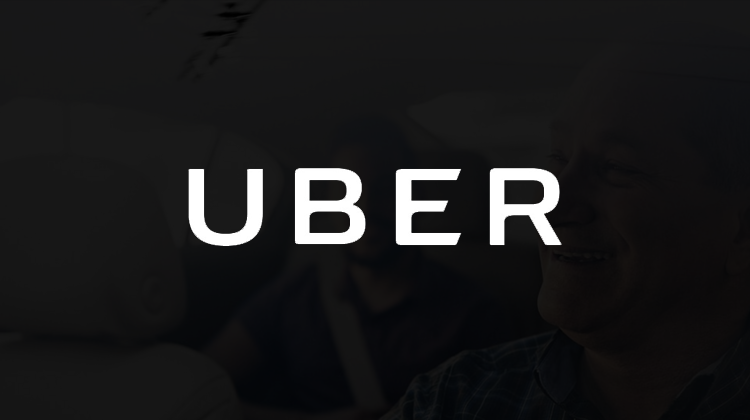优步 (UBER.US) 2025年第二季度业绩电话会
文章语言:
简
繁
EN
Share
Minutes
原文
会议摘要
Uber's Q2 2025 earnings call showcased record financial results, including audience growth, trips, gross bookings, and profitability metrics. The platform strategy focuses on increasing consumer engagement across mobility and delivery services. Notable progress in AV technology and partnerships was announced, along with a $20 billion share repurchase program. The call concluded with a Q&A session addressing investor queries on strategic initiatives and financial performance.
会议速览
Uber's second quarter financial report for 2025 showed record levels of user engagement and transaction volume, with adjusted EBITDA, GAAP operating income, and free cash flow all reaching new highs. Looking ahead, Uber expects to continue strong growth in the third quarter, planning to deepen platform strategies, drive integration of mobility and delivery services, and accelerate the deployment of autonomous driving technology. In addition, Uber announced a $20 billion stock buyback plan to enhance shareholder value.
Discussed the challenges in implementing platform strategy, including cross-business promotion and optimizing consumer experience. Emphasized the value of multi-business users, such as higher retention rates and profits. Mentioned the application of AI in personalized promotion, as well as the development direction of super applications, aiming to achieve highly customized and collaborative user experience.
The significant growth of the Uber platform in this quarter was discussed, especially by introducing low-cost products such as motorbikes and high-end services to attract different consumer groups, successfully expanding its user base. In addition, the trend of users using multiple services within the platform was mentioned, and it was noted that there are still a large number of untapped potential users in key markets, indicating that the growth potential is still significant. Regarding the use of Waymo's autonomous driving cars, although no specific updates were given, their importance in the Uber network was emphasized. Overall, Uber is maintaining its growth momentum through a diversified product strategy and audience expansion, with no signs of growth slowing down.
Uber discussed its 60% growth rate and 36 million membership, emphasizing significant achievements in the delivery field, but slower growth in the mobile sector. They introduced a new feature, 'Surge Savings,' to improve user experience, while pointing out that the commercialization of autonomous vehicles (AV) is still in its early stages, but the company will remain at the forefront.
The conversation discussed the great performance of Waymo's autonomous driving service in Austin and Atlanta, especially in terms of completing trips far more frequently than the average driver. Mention was made of partnerships with Lucid and Nora, clarifying that capital investment is not a burden but a key driver for product commercialization. Looking ahead, the company plans to accelerate product commercialization and explore the model of owning assets and leasing to fleet operators to achieve long-term development.
The dialogue emphasizes cooperation with leading software and hardware companies such as Neuro and Lucid, as well as investment strategies in the field of autonomous driving. By increasing the number of drivers in the ecosystem, including robots and autonomous drivers, service quality and platform value can be enhanced. The focus is on cash flow and capital allocation capabilities, as well as capital return plans after proving the economic benefits of autonomous driving vehicles. Collaboration is seen as a catalyst for driving market development, especially by taking equity positions in software and ecosystem players to accelerate their development and enhance company reputation.
The conversation revolves around Uber's investment strategy, emphasizing the establishment of credibility with financing partners through the recovery of minority equity returns, optimization of capital structure, and investments in real estate, facilities, and vehicles. It mentions Uber's consistent investment approach, which involves initial losses in the market and product early stages, followed by profitability through scaling and accumulated experience. Additionally, it announced a $200 billion cash return plan to prioritize shareholder returns, ensuring that investment decisions align with shareholder interests.
Discussed the importance of accelerating OEM cooperation and hardware platform construction in the field of AVS, mentioned progress in negotiations with several OEMs, and expected to announce collaborations in the coming years. At the same time, pay attention to the impact of companies like Tesla expanding on the market, emphasize their own competitiveness in platform advantages and supply-demand balance, and look forward to the broad prospects of the AVS market.
The discussion focused on the positive response of consumers to the slowdown in pricing growth, pointing out that although there may be short-term impacts after lowering prices, in the long run it increases user retention, especially in the US market. At the same time, the company shared details of its stock buyback plan, emphasizing the strong performance of cash flow generation and planning to reduce the number of shares through ongoing buyback activities. It is expected that this trend will continue in the coming years.
Discussed the vehicle commitment scale in the OEM partnership relationship in the next few years, emphasizing that the majority of the cash will be used for shareholder returns, with the remaining portion to be used to support ecosystem development. At the same time, the asset-light partnership model with Waymo and the importance of its expansion into new cities were explored, indicating that the current focus is on ensuring the success of existing city deployments and looking forward to more collaboration opportunities in the future.
The conversation delved into various forms of collaboration including agency models, asset ownership models, and software licensing models, emphasizing the importance of risk sharing and profit sharing. At the same time, it analyzed the potential economic benefits of purchasing vehicles, especially considering the comprehensive advantages of integrating vehicles with software. Looking to the future, the market will present a variety of collaboration models to meet the needs of different partners, building a stronger and more flexible economic and operational ecosystem.
Discussed Uber's 'dumbbell' strategy in the market, which focuses on both low-cost and high-end markets. In the short term, high-end markets such as corporate businesses and high-reliability services have shown higher profitability. In the long term, although low-cost products currently affect profit margins, they are seen as a larger market opportunity. In addition, Uber is exploring externalizing its technological capabilities, such as data licensing, to develop new sources of revenue, but the specific scale is not clear.
The dialogue discussed the implementation of a dual-track strategy to enhance mobile and delivery services, including priority delivery options to meet different customer needs. It also mentioned applying data collection capabilities to the AV field to accelerate market entry, as well as optimizing resource utilization and profit structure through separating advertising and direct business models.
As a working platform, Uber not only provides traditional job opportunities such as driving for nearly five million users, but also expands its platform capabilities to AI related fields such as data annotation, map annotation, and algorithm optimization through the Uber AI Solutions department. This model utilizes the core advantage of the platform, which is to distribute tasks to global workers, thereby promoting global AI technology development. The company is actively exploring the external application of more platform functions.
Thanks to all teams for their outstanding performance during the quarter, especially the Biology and Prashant teams for their contributions in ensuring smooth day-to-day operations and creating another excellent quarter together. Looking forward to continuing to work together and achieve great results in the next quarter.
要点回答
Q:What does Uber plan to do with the consumer base that uses both mobility and delivery services?
A:Uber plans to leverage the unique power of its platform to foster deeper engagement with consumers who used both mobility and delivery services. This includes promoting cross-platform behavior and targeting those users with higher retention rates, generating higher gross bookings, and profits. By doing so, Uber aims to market aggressively and utilize its structural advantage of being multiline in terms of business operations.
Q:How is Uber utilizing AI to enhance cross-platform promotions?
A:Uber is using AI to pick the right time to send promotions based on a consumer's context, such as their location or past usage patterns. This allows for highly personalized experiences, like offering a Starbucks coffee promotion to a consumer on their way to work. AI and model tuning work are being optimized to create these 'magical experiences' that can further enhance cross-platform promotion.
Q:How does having a single person in charge of both mobility and delivery teams help Uber with its platform strategy?
A:Having Andrew McDonald heading both mobility and delivery teams allows Uber to be more aggressive on the platform. Previously, teams were focused only on their specific app without a unified vision. Now, structurally combined under one person, there is a greater ability to optimize cross-promotion and platform integration, enhancing the user experience and leveraging the company's structural advantage.
Q:What is Uber's stance on becoming a super app and how is it evolving?
A:Uber is slowly moving towards becoming a super app, as evidenced by the presence of a delivery tab on the Rise app and annualized delivery growth bookings of 12% on the mobility app. Uber aims to achieve the best of both worlds by having highly tuned mobility and delivery apps that interact with each other and take targeted moments to promote each other, rather than broad promotion. This transition is a long journey, and with focus from the product and tech teams, as well as the COO, the progress is expected to accelerate.
Q:What is the strategy for using capital in investments related to software and ecosystem players?
A:The strategy involves using capital to take equity positions in software and ecosystem players to help them kick-start their development and add to their credibility by having Uber as part of their capital table.
Q:How will the proceeds from minority stakes be utilized?
A:The proceeds from minority stakes will be recycled to fund investments, with actions already taken and expected to continue in the coming quarters.
Q:How does Uber intend to ensure profitability in the autonomous vehicle (AV) sector?
A:Uber intends to ensure profitability in the AV sector by building scale, gathering experience, and knowing the levers necessary to turn towards profitability, similar to their approach in the delivery business and other growth bets.
Q:What progress has been made with regards to developing partnerships with major original equipment manufacturers (OEMs) for AV technology?
A:There has been significant progress with major OEMs, and Uber is confident that they will have partnerships for commercializing AV technology over the next couple of years, given the accelerated development of software and the need for large-scale hardware platforms.
Q:How is the deployment of AV technology by competitors like Baidu progressing?
A:Competitors like Baidu have established hardware platforms that could be effective at scale, and the deployment is very small, so no significant change in trends has been measured yet.
Q:What is the impact of pricing changes on consumer behavior in the mobility segment?
A:The impact of pricing changes on consumer behavior has been positive, as there is a delayed reaction to pricing where customers with lower prices are more likely to return to the app for future rides, which has shown session and transaction growth benefits.
Q:What is the outlook for mobility trips in the third quarter and beyond?
A:The outlook for mobility trips is positive, with trends in transaction growth getting better as the quarter progresses, which gives confidence in Q3 and potentially into Q4.
Q:What is the company's strategy regarding buybacks and cash flow?
A:The company is focusing on returning meaningful cash flow to shareholders by executing on their buyback authorization. They have already executed over 60% of the $3 billion authorization, which represents about 12% of the market cap. This indicates a commitment to a multiyear plan of active quarterly buybacks, with the potential for more significant actions in case of market dislocations.
Q:What is the expected impact of the company's investment commitments on its free cash flow?
A:The company expects to allocate around 50% of its free cash flow to buybacks, which is in line with their strategy to return capital to shareholders. This strategy also informs the design of their capital programs every quarter. Additionally, a portion of the free cash flow will be redeployed for equity investments in their Av players.
Q:How will the company's partnership commitments affect vehicle investments?
A:The company is focused on the deployment of vehicles through their partnerships, having already allocated significant investments, particularly in the Lucid deal which included a vehicle commitment. However, they do not specify the exact vehicle amounts for different partnerships. The Waymo partnership is described as asset-light and the importance of expanding with Waymo in new cities beyond the two announced is highlighted, though details on when and how this will happen are not provided.
Q:What are the different business models the company sees emerging from their partnerships?
A:The company envisions three different business models for their partnerships: the merchant model, the agency model, and a licensing model for software. In the merchant model, the company pays a partner per trip or per day, creating predictable revenue for the partner. The agency model involves a revenue share with the partner taking a certain percentage and the company taking a take rate as well. There's also a potential for a financing partner to own the assets and the company to pay a licensing fee based on usage.
Q:How does the company perceive the economics of purchasing vehicles versus the Lucid deal?
A:The company believes that the economics of purchasing vehicles, as with the Lucid deal, will likely yield better returns due to the vehicle being a collective deal with integrated software. This suggests that the company expects the Lucid partnership to improve their economic position.
Q:What is the strategy around the bar strategy mentioned in the speech?
A:The bar strategy involves both a low-cost and a premium offering, with the premium having higher near-term profitability potential. The strategy is to offer choices that cater to different consumer segments, with the lower-cost product requiring efficiency across the network to maintain margins while still representing a greater opportunity in terms of trips and Total Addressable Market (TAM).
Q:What is the potential of the lower-end product in terms of TAM?
A:The lower-end product represents a greater opportunity in terms of trips and TAM due to its potential for significantly increasing the number of rides and overall market reach.
Q:How is the barbell strategy being applied in mobility and delivery businesses?
A:The barbell strategy is being applied in mobility and delivery businesses by externalizing tech capabilities, offering choices between higher and lower-cost options, and focusing on profitability and market expansion. Examples include prioritizing delivery speed for a premium or accepting a delay for cost savings.
Q:What is the significance of the advertising business mentioned in the speech?
A:The advertising business is significant as it is growing rapidly with a very high margin. It's a result of separating the value Uber brings to restaurants, such as audience generation and fulfillment capabilities, into distinct business segments. This allows for faster market penetration and innovation, rather than focusing primarily on profit.
Q:How is Uber seen as a platform for work?
A:Uber is seen as a platform for work because it offers opportunities for approximately one million individuals to earn income through various means, not limited to driving or transporting items. One example is Uber AI solutions, where data labeling, map labeling, and algorithm tuning are tasks that enable the growth of AI developments using the core Uber task-externalizing capability.
Q:What are the prospects for the Uber AI solutions?
A:Uber AI solutions are growing very quickly off of a small base and are engaging data labeling, translating, and algorithm tuning. The prospects involve utilizing the core Uber capability of sending out tasks globally to a variety of earners, which could include both platform drivers and specialists, to facilitate exciting AI developments worldwide.

Uber Technologies, Inc.
Follow





